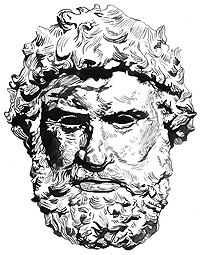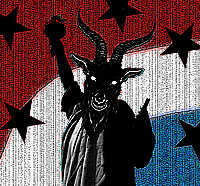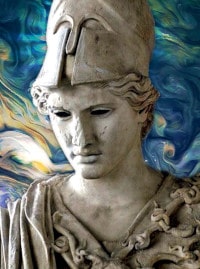Reading from pages 11-22 of Empire of the Summer Moon: Quanah Parker and the Rise and Fall of the Comanches, the Most Powerful Indian Tribe in American History, 2010, Scribner, NY, 371 pages
“…Quanah’s own genetic heritage contained the seeds of his tribe’s eventual destruction.”
-page 21
First, I turn to the cover, to the photo of Quanah Parker, the son of Cynthia Ann Parker, a lovely girl with blond hair and blue eyes, and note that this man is as dark as a modern African American, and has very little racial resemblance to the chiefs of the earlier east, who seemed an entirely different race from their western cousins.
The Parker Clan came to Texas out of the green and soggy east in 1833, settled a vast area of the Texas frontier, regarded Indians as sub-humans, who had no right to their own land, and in true Christian fashion, regarded the Aborigine occupants of Comancheria as interlopers, Satan’s children infesting the lands intended for cultivation and domestication. Despite building a fort and acting as military occupiers of a virgin land according to the commands of Genesis to go forth and multiply, the fool Parker Men left their fort open, went about unarmed and failed to extract a single casualty from the warriors who swept down on them, killed and scalped five men, gang raped and tortured 2 women, kidnapped three children and abducted and gang-raped 2 women.
Brutally reminiscent of the Indian Warr of New England in 1676, in which military style occupation by Christian congregationalists, was not paired with any sense of responsibility for one’s own defense, but rather a sense of arrogant cultural superiority. This was coupled with a baseline confidence that the secular merchant order, the remnant warrior sensibilities among some few European American avengers, the cooperation of most native tribes as scouts and man-hunters, and the prolific destruction of the environment would serve to make of a savage land stalked by barbarian warriors a feed-pen stocked with sissy guilt men.
In the preceding chapter, A New Kind of War, Gwynne points out that civilized soldiers were entirely helpless against barbarian warriors unless they employed men of enemy tribes. It is also obvious, that the worst tribes [being in Western-Christian terms less savory] such as the Tonkawas in Texas and earlier the Mohawgs and Moheegans in New England, were cannibals. The Anglo methods of land appropriation by occupation, toil and passive sacrifice, was essential enabled by alliances with most native tribes against the most dominant tribes. This way of doing business extends to the present day, when the United States will not invade a nation no bigger than Texas unless numerous lesser nations also commit men and resources to the relative squashing of a bug.
My take away from the opening salvos of Empire of the Summer Moon, and my previous reading on the Comanches, is that even these most savage, racially distinct and cruel Indians did not treat “whites” any different than enemy tribes of natives, and that adoption of abducted women and children fits the continental standard, with the exception that there is no distinction in cruelty between the invaders and the natives.
For, in the east, natives ALWAYS treated the invaders according to higher standards of honor and kindness [even in torture or men and held rape of captive women beneath warrior ethics] than did the invaders. Whereas, beyond the Mississippi, both sides were as cruel and pitiless to the other.
Again, this argues for a level of racial empathy that is obviously reflected in the fact that, unlike the dusky, Asiatic, half-breed Quanah Parker, most native chiefs of the Eastern Woodland tribes seemed predominantly European in countenance. It is impossible to view photos and art of Western Indians and Eastern Indians without concluding that the latter were either partly or predominantly European of origin.
Explore Plantation America
Support Plantation America Research
To support this project and view some graphics go to:
link › patreon.com/jameslafond











The thing that most impressed me was that the Comanches were one of the few peoples to master horseback archery and fighting on horseback. The rate of fire with the bow and the ability to maneuver on horse enabled them to stop the Spanish and Anglo advance until Samuel Colt invented the Colt-Walker pistol - a hand cannon with 6 shots and a range of 100 yards which is well outside the effective range of a composite bow.
The Comanches still probably could've negated this advantage had they the ability to keep fighting when their chief was killed and had they changed tactics to night ambushes where you can low crawl and unleash a salvo of arrows really close or fight hand-to-hand.
It was tragic to read that the US government kept reneging its promises to the conquered Comanches out of pure greed. I'm sure there's a lesson in there for us who have been slated for replacement.